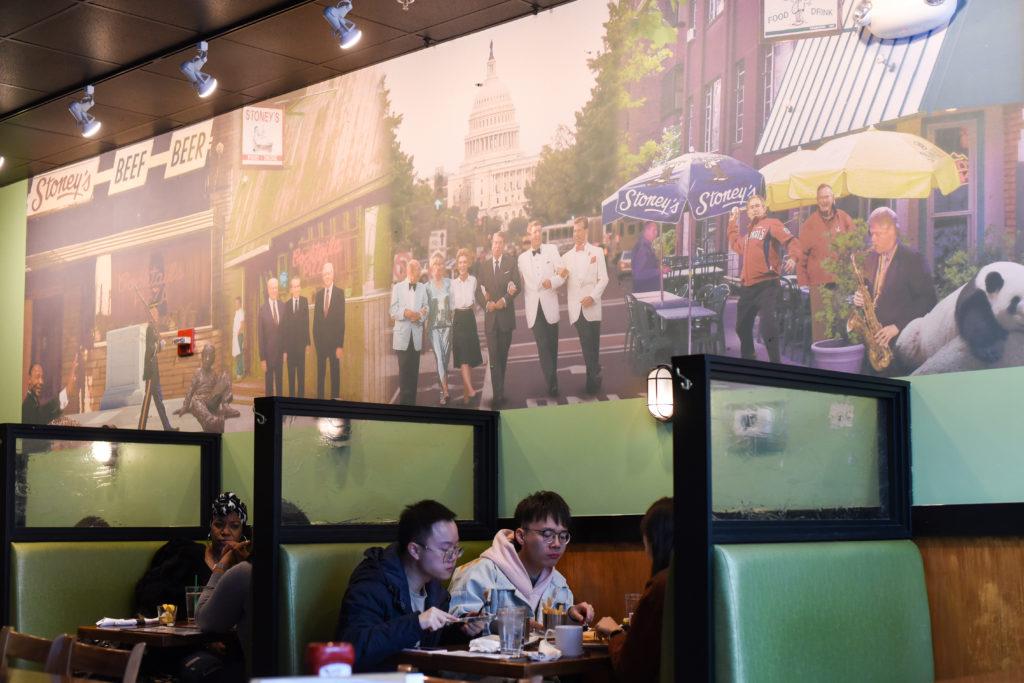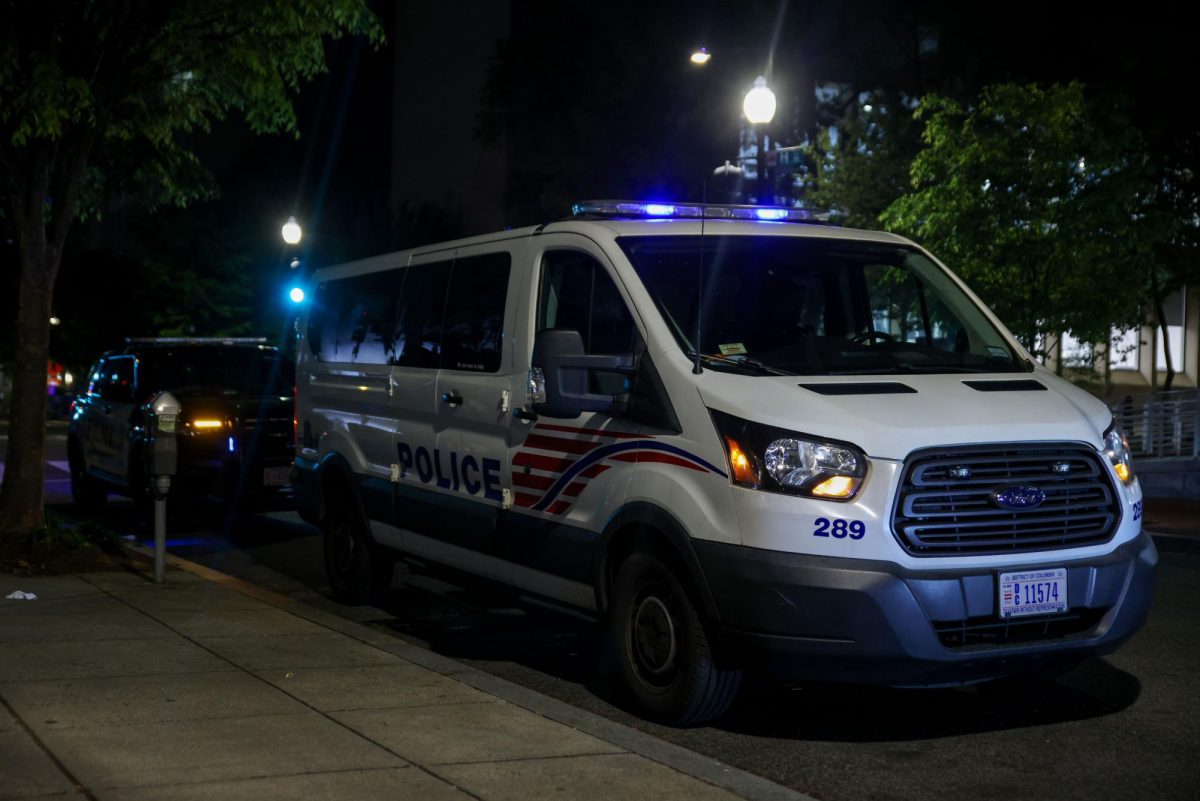Students cycle in and out of Foggy Bottom every academic year. But for businesses, the neighborhood’s price tag keeps them moving.
Foggy Bottom residents said rent and operating costs in the neighborhood have increased over the past several decades, making it a home for larger businesses while pushing out smaller businesses. Longtime Foggy Bottom business owners said they have hiked menu prices to meet the increased cost of rent, and some businesses have left the neighborhood because they could not afford to maintain their establishments in Foggy Bottom.
Patrick Kennedy, a Foggy Bottom and West End Advisory Neighborhood commissioner, said developers – like Boston Properties, which is reconstructing 2100 Pennsylvania Ave. – raise rent rates when they add new projects to the neighborhood. Small businesses that can’t afford the extra cost are therefore displaced, he said.
“I don’t know that necessarily these developers are causing it, but they are reacting to it and they’re supplying a market for it,” Kennedy said.
Kennedy said displacement is not as prevalent in Foggy Bottom as it is in other neighborhoods – like Shaw, U Street and areas of Southeast D.C. – as housing costs rise across D.C.
About 40 percent of the District’s lower-income neighborhoods underwent gentrification between 2000 and 2013, The Washington Post reported in March.
“I would not compare Foggy Bottom necessarily to neighborhoods like Shaw or any of the neighborhoods more on the eastern part of the city where there is a huge gap between the people coming in and the people being displaced in terms of income,” Kennedy said.
Three percent of people living in Ward 2, where GW is located, experience residential instability – the lowest rate District-wide, according to a housing report the Office of the Deputy Mayor for Planning and Economic Development released this summer. An individual is considered residentially unstable if they move homes several times throughout a year, according to the report.
Twelve percent of Ward 8’s residents are considered residentially unstable, the highest rate in the District, the report states.
Kennedy said that adding restaurants and bars to the the Foggy Bottom neighborhood, like Flower Child and Duke’s Grocery, has attracted residents to the neighborhood – but doesn’t cater to residents who can’t afford the prices.
“The single-use aspect of the neighborhood has been an evolution over the past several decades that has zapped some of the vitality from the community,” he said. “And you’ll have retail establishments like some of the recent places that have opened that are very good and might be very unique, but they’re not necessarily people that cater to a lower price point.”
Justin Glass, an owner of Stoney’s on L, said he’s seen an uptick in the number of students and young professionals coming to the bar since its opening in 2013, a trend he said correlates with demographic changes in the neighborhood residency.
“Being in a semi-business district right here, our business coincides with the demographic change within the companies and these offices too,” he said.
Glass said he signed a 10-year lease with the company Vornado, which JBG Smith later bought, that owns the complex where Stoney’s on L is located. He said rent increases every year by about 1.5 percent, which he’s adjusted to by slightly raising menu prices.
“It’s minimal, but as I mentioned, being in a restaurant, margins are as thin as it gets in an industry, so every little thing counts,” he said.
Kirk Francis, the co-owner of Captain Cookie, said he’s been able to maintain steady business despite the high turnover in The Shops at 2000 Penn, where his business has been located for five years.
“We have had a strong brand going into the space, and I guess keeping that brand strong over the years, we’ve been able to maintain foot traffic without having to be affected too much,” he said.
But Francis said D.C.’s minimum wage hike has been a challenge for his business – he and his wife didn’t generate a profit one year, which they accounted for by slashing their personal salaries.
“The wages in D.C. have really skyrocketed in the past five, 10 years and so the economics that were behind our original price has totally changed,” he said. “So we’ve had to raise prices a couple times just to keep up.”
Gentrification experts said spikes in the neighborhood’s property values correlate with surrounding development projects, like the University’s redevelopment of The Shops at 2000 Penn and the International Monetary Fund’s reconstruction project.
David Hyra – the director of the Metropolitan Policy Center at American University, which researches urban development – said the majority of Foggy Bottom’s displacement occurred when the State Department was constructed in the neighborhood in 1947, which pushed industrial workers out and brought in government workers.
Hyra said the neighborhood is now experiencing a second wave of gentrification, known as “super-gentrification,” which occurs when property values increase as people make more money.
He said the presence of the World Bank and the IMF, which opened in the 1940s, and the GW Hospital – which opened its facility in 2002 – have prompted an uptick in the neighborhood’s property value.
“I think if you’re looking at the last 20 years of Foggy Bottom it’s really hard to say that it’s gentrified because it wasn’t low income, but you could say that it has reached the point where super-gentricaiton is occurring because it’s gone from middle-upper to much more higher income,” he said.
The University has opened or renovated several buildings and residence halls in the past few years, including District House and 2100 Pennsylvania Ave. Officials halted plans to construct a new freshman residence hall near the IMF building last academic year to focus on renovating Thurston Hall beginning in June.
Hyra said any residence hall the University uses for student housing is building space that could be used for D.C. residents, which caps the number of community members who could live in the neighborhood.
He said investing in affordable housing is not common for universities, but GW could use its endowment to invest in affordable housing in the East End to mitigate the gentrification that the hospital’s construction could bring. The GW Hospital announced plans last year to open a facility in Southeast D.C. by 2023.
Officials constructed four affordable housing units in 2016 as part of a negotiation for the 2100 Pennsylvania Ave. complex.
“People often don’t think that affordable housing is the face for an investment that will have a rate of return, but it typically does,” he said.





